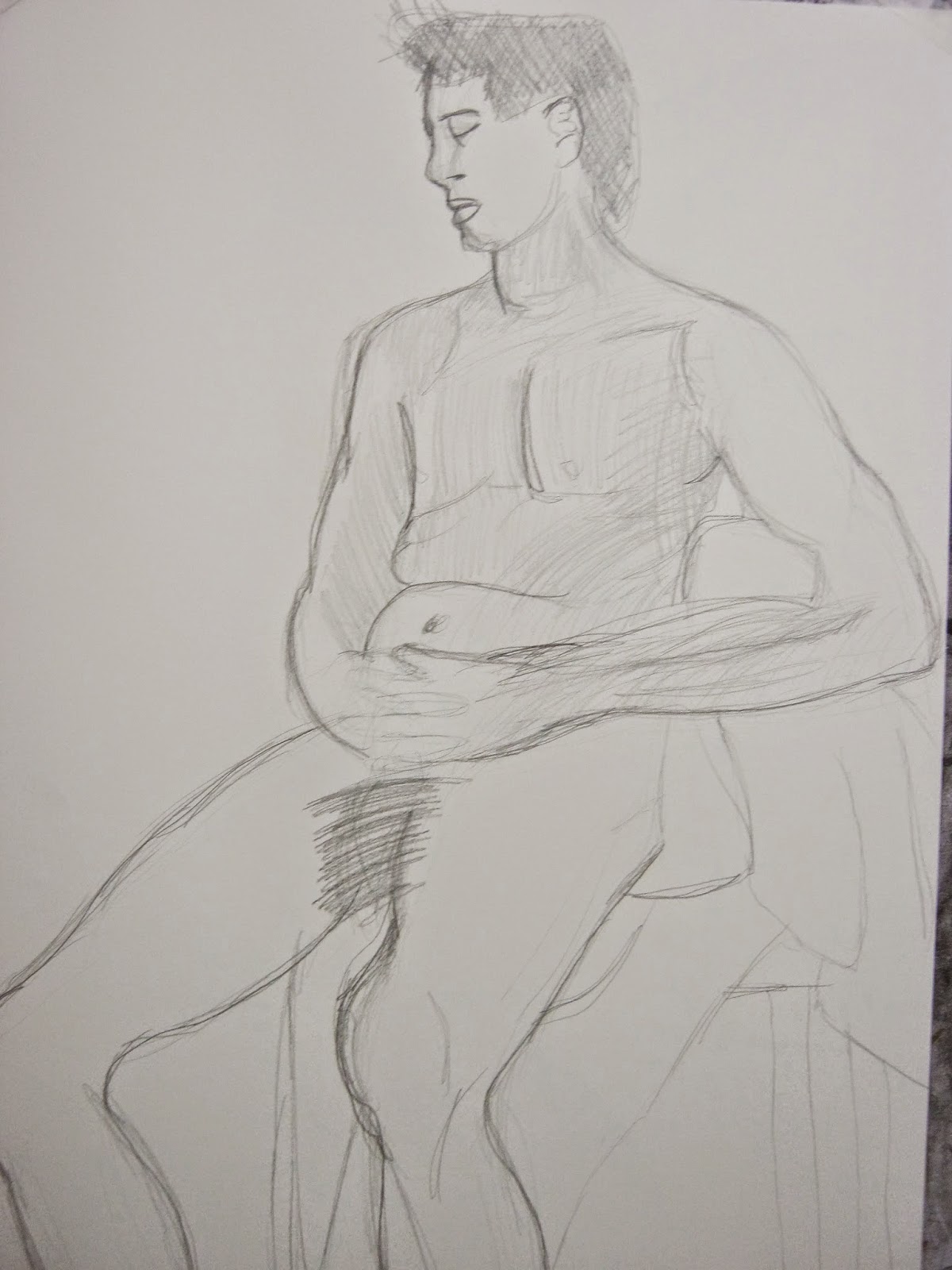In today's session we completed more life drawings but instead of a typical style we went for more experimental drawings to train our skills and experiment to see the results. For example we started with trying to draw the figure with our non-dominant hand (in my case my left hand) to see what results it would produce. What I find interesting about the results of this experiment is how the line work looks as its got this unique delicacy and shakiness without looking too rough. The proportions and detail are a bit shaky but I don't think you can expect too much from a drawing made with my opposite hand and it still captures the general form so its got a unique feel to it.
These second drawings were drawn blindly as a lesson in trusting our spacial awareness skills on the paper and to get a greater feel of the figure of the body instead of just concentrating on the actual concrete forms which can lead to drawings that may look accurate but lack any visual flair or human emotion. As you can see there are a number of overlapping lines that illustrate the form of the figure but they lack focus and are oddly proportioned so they are not a reliable sketch that reflects my proportional skills but rather my pencil skills in capturing the feel of an object with all of its details. What I like about it is the unique look of the line work and how it outlines every crevice and feature of the body.
This third drawing was a experiment in continuous line without the blindness and is designed for us to see how good we are at representing the human figure without lifting the pencil off the canvas. It also teaches us about the importance of the idea that things don't need to be accurate to sell the idea of the human figure and instead we should focus on capturing the details and textures of the human body to really bring it to life. I like the progression of soft line towards more definite harder marks because it creates a sense of finality to the drawing and it creates depth in certain places on the body. However the proportions of the legs are a little too short so I should keep an eye on my proportions in the future.
In this final sketch of today we concentrated on creating a sort of final conclusion to all the skills and lessons that we learn't from creating the prior experimental sketches by drawing a final human figure on a large scale within a longer period of time. I first started by drawing the initial outline in a a light pencil line and then slowly I started to make harder and harder marks to build up more definition and detail into the figure. I even added some detail in some light pencil tone to create minuscule details in the shading and to add a few more layers to the drawing. What I like about this drawing is the way in which I have captured the figure realistically with proportions that seem believable and even the face seems to look more realistic this time around.

















